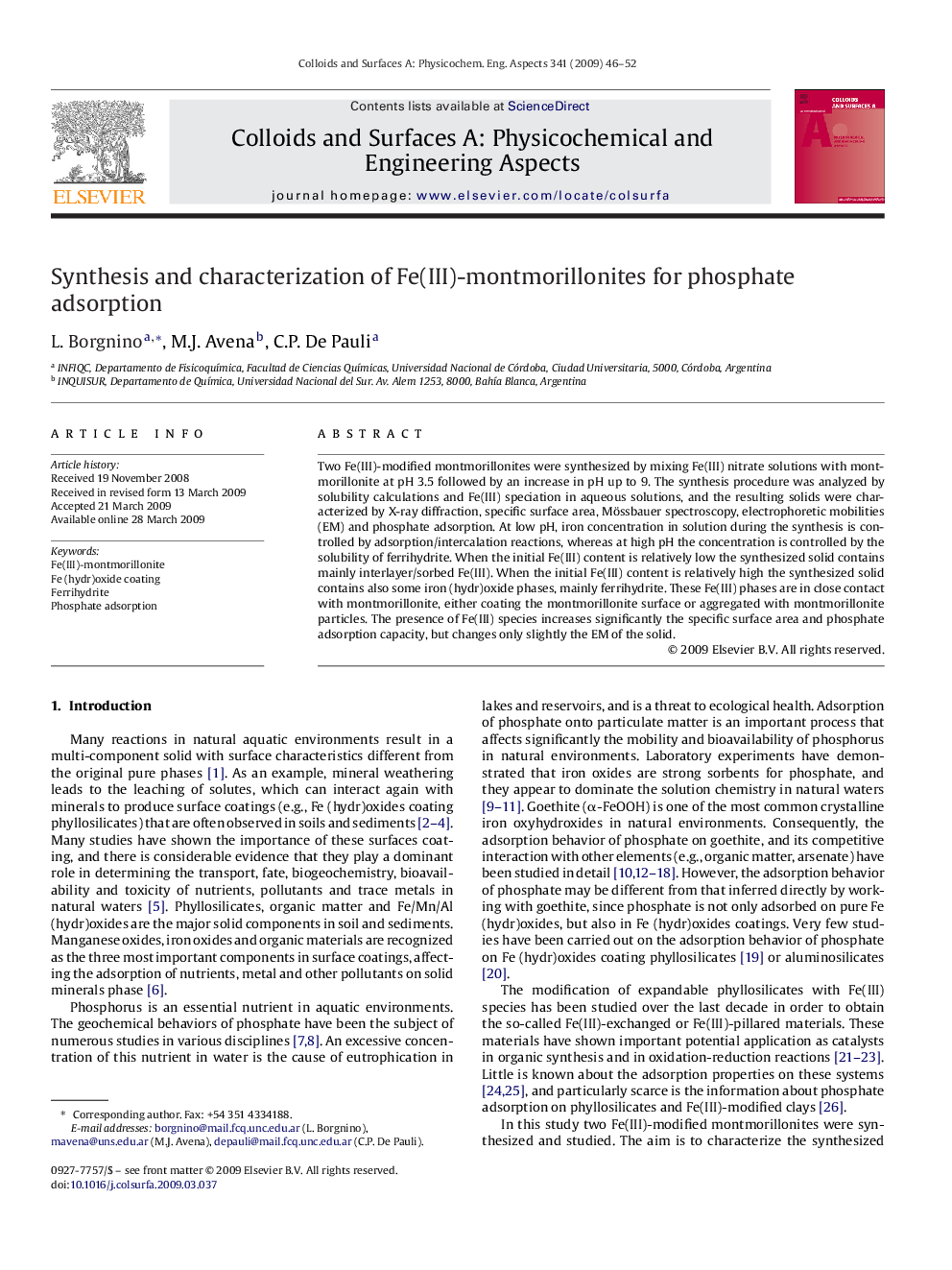| Article ID | Journal | Published Year | Pages | File Type |
|---|---|---|---|---|
| 595980 | Colloids and Surfaces A: Physicochemical and Engineering Aspects | 2009 | 7 Pages |
Two Fe(III)-modified montmorillonites were synthesized by mixing Fe(III) nitrate solutions with montmorillonite at pH 3.5 followed by an increase in pH up to 9. The synthesis procedure was analyzed by solubility calculations and Fe(III) speciation in aqueous solutions, and the resulting solids were characterized by X-ray diffraction, specific surface area, Mössbauer spectroscopy, electrophoretic mobilities (EM) and phosphate adsorption. At low pH, iron concentration in solution during the synthesis is controlled by adsorption/intercalation reactions, whereas at high pH the concentration is controlled by the solubility of ferrihydrite. When the initial Fe(III) content is relatively low the synthesized solid contains mainly interlayer/sorbed Fe(III). When the initial Fe(III) content is relatively high the synthesized solid contains also some iron (hydr)oxide phases, mainly ferrihydrite. These Fe(III) phases are in close contact with montmorillonite, either coating the montmorillonite surface or aggregated with montmorillonite particles. The presence of Fe(III) species increases significantly the specific surface area and phosphate adsorption capacity, but changes only slightly the EM of the solid.
